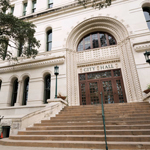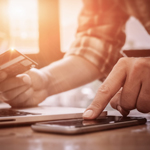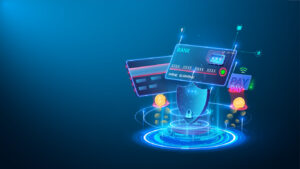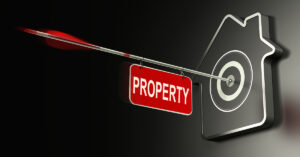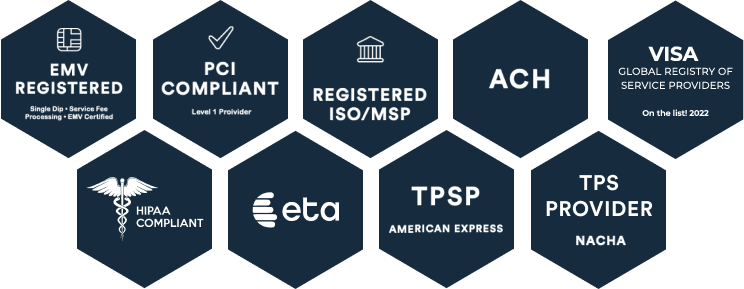Building a more customer-focused payment experience for your constituents? Download our free guide: How to Reduce the Risk of Non or Default Payments for Government Customers >
Customer experience is critical for every industry. In retail, curbside delivery and two-day shipping reign supreme, in healthcare, text check-ins and staff friendliness determine patient loyalty, and in technology, the latest updates in speed and convenience on mobile and desktop devices determine which companies live to see another product release.
And in government, a customer-focused—or constituent-focused—experience is just as critical.
Especially when constituents are making government payments.
Convenience and speed have been trending for payments more and more as other industries find ways to create a customer-focused payment experience. Examples are easy to find—Buy Online, Pick-Up In Store for retail, text-to-pay in healthcare, and even tap-and-go at local restaurants. Each of these payment options focuses on the customer’s desire to quickly check out, use typical payment methods (like credit cards, debit cards, Venmo, PayPal, and more), and even opt-in to use a contactless or digital payment option for a more sanitary (or just solitary) payment experience.
And it’s no surprise—63% of consumers report that they would switch to a new business if contactless payment options were made available and 70% of U.S. merchants report that customers are requesting contactless payment options such as mobile payments or tap-and-go payments.
It’s time to build a customer-focused payment experience for your constituents.
Here’s your government guide:
Step 1: Understand what’s not working for constituents right now.
There are three critical pillars in a customer- and constituent-focused payments experience:
→ Simplicity
→ Security
→ Speed
Currently, many government payment options don’t follow these three pillars. Instead, they’re complicated, present opportunities for fraud, and they’re slow.
Pay-by-mail:
Nearly 80% of constituents still receive their government bills in the mail (even though only 43% say they still want to get a paper invoice or bill statement in their mailbox). But whether constituents receive their bill reminder through the mail, in a text, or through email, nearly 50% are still sending in a check, utilizing the pay-by-mail option. And this directly contradicts consumers expectations and desires: only 5% of U.S. consumers want to send bill payments through the mail. More than 40% of constituents say they are concerned about payment security to government agencies and sending checks through the mail adds to that worry.
Pay in person:
What was once considered the option that would stand the test of time—pay in person—has been challenged during the COVID-19 pandemic. As shut-downs and quarantines rippled throughout the United States, paying government bills in person wasn’t possible in 2020. And while many local governments are staffing offices and open to the public now, we’ve seen that paying in person isn’t always an option. Factor in holidays and office hours, it’s an inconvenient way to pay that only 35% of Americans utilize today.
Third-party payment portal:
For many local governments, third-party portals and reminder systems are set up to help manage payment details, reminders, confirmations, and even payment processing. This complicates the process for constituents as they log on to their local government page, navigate a likely complex series of pages, connect to a separate portal, log in, and then make a payment. With so much friction in the payment journey, it can force constituents to use pay-by-mail or pay-in-person methods.
Step 2: Make your payment process simple.
Your constituent payment experience should be focused on simplicity. So many interactions with local government agencies can be complicated and complex. Make sure your payment experience isn’t one of them.
As you implement improvements to make your payment experience simple, consider the following questions and suggestions:
- Are your payment options easy to see on your website, your paper bills, in person at your office?
Clearly list all payment options (and variations of those options—like which credit card you accept) in every communication channel to your constituents about their upcoming bill(s). - How many steps will constituents need to follow in order to complete a payment? Try to keep the number of clicks on your website between three and five from homepage to payment submitted.
- Is it simple to make a payment on a mobile device?
Whether you offer mobile bill payment, text-to-pay, or just your website experience, make sure each option is optimized for a mobile user.
Step 3: Increase the security of your payment process.
With cybersecurity a growing concern for most Americans and government a key target for ransomware, security breaches, and other criminal cyber activity, creating a secure payment experience is essential.
As you implement improvements to make your payment experience more secure, consider the following questions and suggestions:
- For payments made digitally, are constituents directed to a third-party site to complete the payment?
37% of consumers report ending an online payment because they were concerned about security—integrate your payment processor into your website for a safer experience.
- Are constituents able to make a payment online versus only making payments through the mail or in person?
Implement a digital payment option and accept payments through your website.
- What digital payment options are you offering your constituents?
Consider expanding your accepted payment options to include all major credit cards (American Express, MasterCard, Discover Card, Visa) and all major payment platforms (Venmo, PayPal, etc.).
Step 4: Improve the speed of making and viewing payments.
Speed and convenience are tenets of a positive customer experience for 80% of all consumers. They should be considered top priorities for your payment experience. And for their day-to-day life, consumers already see changes to make payments faster—mobile payments, text payments, increased payment options, and digital payments.
As you implement improvements to make your payment experience faster, consider the following questions and suggestions:
- Do you have enough options to make the checkout experience fast?
75% of businesses believe customers want more payment options and at least 50% of businesses are currently evaluating at least eight new payment methods—increase the speed at checkout by offering more customer-focused payment options. - Are your bills and invoices delivered digitally or via the mail?
For 35% of constituents, the speed at which they pay their government bills is determined by how the bill is delivered—move your bill reminders and invoices to a digital communication channel (consider email or text) to speed up payments.
- How do constituents know what bills have been paid/view their payment history?
Offer an online view of payment history and payment progress (a good use case would be annual tax payments) so constituents can self-serve information rather than calling in and speaking to your office staff (tying up lines and adding friction for the constituent).
Building a more customer-focused payment experience for your constituents? Reduce the risk of non or default payments for government customers. Download our free guide: How to Reduce the Risk of Non or Default Payments for Government Customers >
